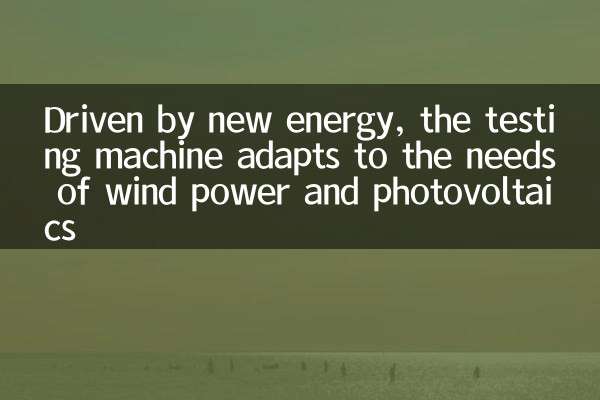How to make a rocket launchable: a complete analysis from principle to practice
With the rapid development of aerospace technology, rocket launch has become an important way for humans to explore the universe. This article will combine the hot topics and hot content of the past 10 days to provide a structured analysis of the rocket production and launch process, covering basic principles, key technologies and practical cases.
1. Basic principles of rocket launch

Rocket launches rely on the principle of reaction force to obtain thrust by injecting gases produced by combustion at high speeds. The following are the core components of the rocket:
| parts | Function | Material |
|---|---|---|
| propulsion system | Provide thrust | Liquid/solid fuel |
| Rocket body structure | Carrying load | Aluminum alloy/composite materials |
| control system | Adjust flight attitude | Electronic sensor + computer |
2. Recent aerospace hot events (last 10 days)
| Date | event | Related technologies |
|---|---|---|
| 2023-11-05 | SpaceX Starship’s second test flight | Full flow staged combustion engine |
| 2023-11-08 | China tests reusable rocket | vertical return landing technology |
| 2023-11-12 | Blue Origin BE-4 engine delivered | Liquid oxygen methane propulsion system |
3. Key steps in making your own launchable rocket
1.design stage: Use software such as OpenRocket to simulate aerodynamic performance, and the thrust-to-weight ratio must be greater than 1.5
2.Material preparation: It is recommended to use PVC rocket body + commercial solid fuel engine (such as Estes series)
3.safety regulations: Must be equipped with an electronic ignition system and a safety distance of more than 300 meters
| parameters | small model rocket | Professional grade rocket |
|---|---|---|
| height | 0.5-2 meters | 10-50 meters |
| Thrust | 5-50N | 50-500kN |
| maximum speed | 100m/s | >2000m/s |
4. Latest technological breakthroughs
1. 3D printed rocket engine (Terran 1 from Relativity Space)
2. Biofuel propulsion system (European Space Agency Prometheus program)
3. Artificial intelligence flight control system (SpaceX automatic landing algorithm)
5. Launch site selection criteria
| elements | Specific requirements |
|---|---|
| area | No buildings within a radius of 1km |
| airspace | Requires approval from civil aviation department |
| ground | Hard, flat, no vegetation |
Conclusion:Rocket production and launch are systematic projects that require strict compliance with safety regulations. It is recommended that enthusiasts start with model rockets and gradually master related technologies. With the development of commercial aerospace, it will be more convenient for individuals to participate in aerospace activities in the future.

check the details

check the details